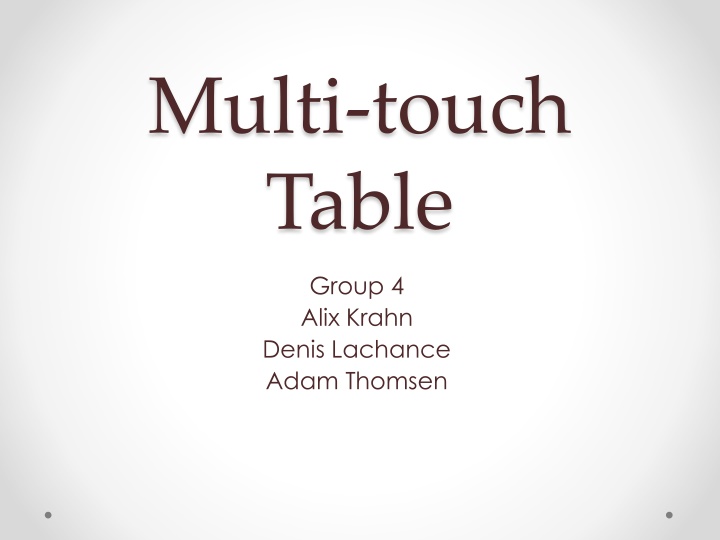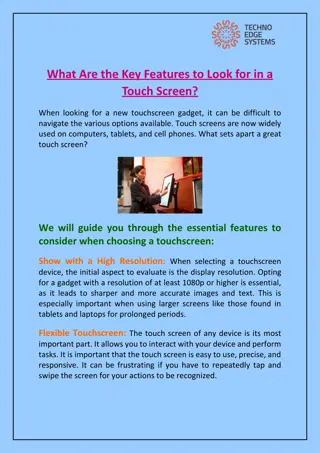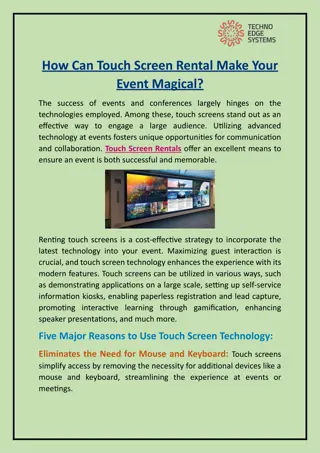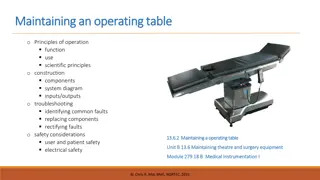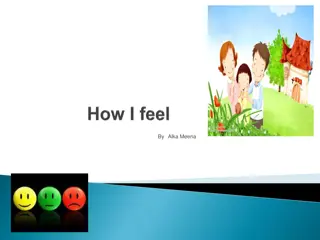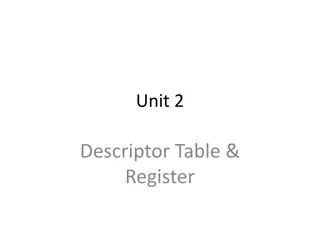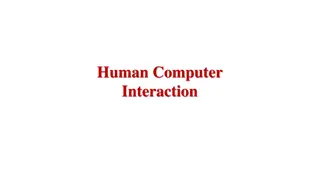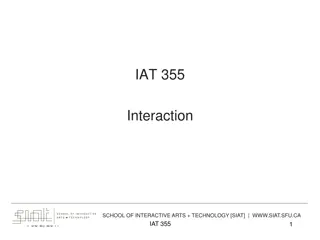Multi-touch Table for Collaborative Interaction
This multi-touch table enables intuitive control of software and applications using natural gestures, making it ideal for collaboration, learning, and assisting individuals with disabilities. The innovative infrared touch technology allows for interactive engagement, while data transfer capabilities enhance usability. Explore the possibilities of this advanced technology for seamless interaction and engagement.
Download Presentation

Please find below an Image/Link to download the presentation.
The content on the website is provided AS IS for your information and personal use only. It may not be sold, licensed, or shared on other websites without obtaining consent from the author.If you encounter any issues during the download, it is possible that the publisher has removed the file from their server.
You are allowed to download the files provided on this website for personal or commercial use, subject to the condition that they are used lawfully. All files are the property of their respective owners.
The content on the website is provided AS IS for your information and personal use only. It may not be sold, licensed, or shared on other websites without obtaining consent from the author.
E N D
Presentation Transcript
Multi-touch Table Group 4 Alix Krahn Denis Lachance Adam Thomsen
What does it do? Multi-touch interface to control software and applications Intuitive, natural gestures and natural interface to use computer Useful for collaboration and learning, particularly with children and people who are disabled IT S COOL, YO
Picture Captured by USB Camera
Picture sent over USB to DE2 Webcam to Board Data Rate Data rate (measured on computer) ~0.7MB/s Below the data rate max for the USB (1.5MB/s)
Can it do it? 1 comparison per pixel Copy and threshold Cluster pixels Calculate centroids Low-pass filter Calibrate 5 comparisons per pixel for first pass 2 comparisons per pixel for second pass 2 divisions and 0.25%*pixels additions for each of up to 10 clusters Two multiplication and two additions for each of 10 points Two multiplications for each of 10 points Total: 19,525,498 (comparison, addition, subtraction) calc/s 1,440 (multiplications, divisions)/s
Data sent to computer by USB Board to Computer Data Rate For each frame sent by the webcam, data for ten touch points is sent to the computer. Each touch point contains three integers: an x location, a y location, and the size of the touch point. Therefore, the data rate is: 24Hz * (3*10*4Bytes + 4Byte header) = 2976B/s
Test Plan Software o Unit tests o Integration tests o Test image frames and real image frames to test image processing o Testing FIFO buffer overrun and underrun o Maximum performance using fake data sources o Memory leaks Webcam Infrared Tracking o Ability to visually track touches Hardware controllers o Testbench o Basic functionality Integration and functional testing o Testing strict functionality, upper and lower bounds Performance and calibration o Response time o Pressure of touch required o Any noise o Recognition of gestures o Resolution o Calibration: spatial and pressure required
Whats special? Unique peripherals Using common I/O USB Debug and calibration modes Digital Signal Processing
